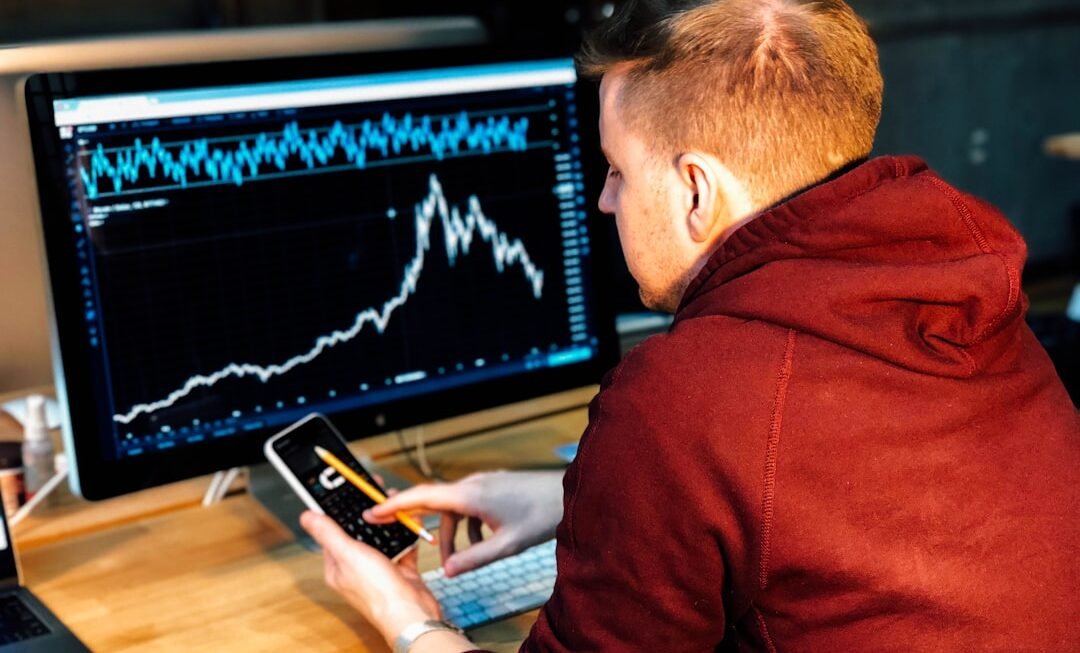JPMorgan’s LOXM AI system represents a significant leap forward in the realm of algorithmic trading and trade execution. Developed to enhance the efficiency and effectiveness of trade processes, LOXM leverages advanced machine learning techniques to analyze vast amounts of market data in real-time. This system is designed to optimize trade execution by minimizing costs and maximizing the likelihood of achieving favorable prices.
By utilizing historical data, LOXM can identify patterns and trends that inform its trading strategies, allowing it to adapt to changing market conditions dynamically. The architecture of LOXM is built on sophisticated algorithms that can process information at speeds unattainable by human traders. This capability enables the system to execute trades with precision, taking into account various factors such as market volatility, liquidity, and order size.
The integration of artificial intelligence into this process not only enhances the speed of execution but also improves decision-making by providing insights that would be difficult for human traders to discern. As a result, LOXM has positioned JPMorgan as a leader in the competitive landscape of financial services, showcasing the potential of AI in transforming traditional trading practices.
Key Takeaways
- JPMorgan’s LOXM AI system is designed to optimize trade execution and reduce slippage.
- AI systems have a significant impact on trade execution by improving efficiency and reducing human error.
- AI technology helps reduce slippage by analyzing market data and making split-second decisions to execute trades at the best possible prices.
- JPMorgan’s LOXM AI system works by using machine learning algorithms to analyze market conditions and execute trades accordingly.
- The future of AI in trade execution looks promising, but there are challenges and limitations that need to be addressed, including regulatory considerations and the role of human traders in conjunction with AI systems.
The Impact of AI Systems on Trade Execution
Enhanced Speed and Efficiency
Traditional methods often involve manual processes that can be slow and prone to human error. In contrast, AI systems can analyze market conditions and execute trades within milliseconds, ensuring that opportunities are seized before they vanish. This rapid execution is particularly crucial in high-frequency trading environments where even a fraction of a second can make a substantial difference in profitability.
Improved Accuracy in Trade Execution
Moreover, AI systems contribute to improved accuracy in trade execution. By employing complex algorithms that consider a multitude of variables, these systems can make informed decisions based on real-time data analysis. This capability reduces the likelihood of costly mistakes that can arise from emotional decision-making or oversight by human traders.
Iterative Learning for Better Outcomes
Additionally, AI systems can continuously learn from past trades, refining their strategies over time to adapt to evolving market dynamics. This iterative learning process enhances the overall effectiveness of trade execution, leading to better outcomes for investors and institutions alike.
Reducing Slippage with AI Technology
Slippage, the difference between the expected price of a trade and the actual price at which it is executed, is a common challenge in trading that can significantly impact profitability. AI technology plays a pivotal role in mitigating slippage by optimizing order execution strategies. By analyzing historical data and current market conditions, AI systems can determine the best times to enter or exit positions, thereby minimizing the risk of slippage occurring.
For instance, LOXM employs sophisticated algorithms that assess liquidity levels and market depth before executing trades. By understanding where liquidity is concentrated, the system can strategically place orders in a manner that reduces the likelihood of slippage. Additionally, AI can dynamically adjust order sizes and execution tactics based on real-time market fluctuations, ensuring that trades are executed at the most favorable prices possible.
This proactive approach not only enhances trading performance but also instills greater confidence among traders and investors who rely on these systems for their transactions.
How JPMorgan’s LOXM AI System Works
The operational framework of JPMorgan’s LOXM AI system is rooted in its ability to process and analyze vast datasets efficiently. At its core, LOXM utilizes machine learning algorithms that are trained on historical trading data, allowing it to recognize patterns and predict future market movements. This predictive capability is essential for making informed trading decisions in real-time, as it enables the system to anticipate price changes and adjust its strategies accordingly.
LOXM’s architecture incorporates various components that work in tandem to facilitate optimal trade execution. The system continuously monitors market conditions, assessing factors such as volatility, liquidity, and order flow. When a trading opportunity arises, LOXM evaluates multiple execution strategies based on its analysis, selecting the one that is most likely to achieve the desired outcome with minimal slippage.
Furthermore, LOXM’s ability to learn from past trades means that it continually refines its approach, adapting to new market conditions and improving its performance over time.
The Future of AI in Trade Execution
As financial markets continue to evolve, the role of AI in trade execution is expected to expand significantly. The increasing complexity of global markets necessitates advanced technological solutions that can keep pace with rapid changes. Future iterations of AI systems like LOXM are likely to incorporate even more sophisticated algorithms capable of analyzing unstructured data sources such as news articles, social media sentiment, and macroeconomic indicators.
This holistic approach will provide traders with a more comprehensive view of market dynamics, enabling them to make better-informed decisions. Moreover, advancements in natural language processing (NLP) could allow AI systems to interpret qualitative data more effectively. For example, understanding sentiment from news headlines or social media posts could provide valuable insights into market trends and investor behavior.
As these technologies mature, we may see a shift towards more autonomous trading systems that require minimal human intervention while still delivering optimal results. The future landscape will likely feature a blend of human expertise and AI capabilities, creating a synergistic environment where both elements enhance trade execution.
Challenges and Limitations of AI Systems in Trade Execution
Despite the numerous advantages offered by AI systems like LOXM, there are inherent challenges and limitations that must be addressed. One significant concern is the potential for algorithmic bias, where the models may inadvertently favor certain types of trades or market conditions based on historical data. If not carefully monitored and adjusted, this bias could lead to suboptimal trading decisions or exacerbate market volatility during periods of stress.
Additionally, reliance on AI systems raises questions about transparency and accountability in trading practices. As these systems become more complex and autonomous, understanding their decision-making processes becomes increasingly difficult for human traders and regulators alike. This opacity can create challenges in assessing risk and ensuring compliance with regulatory standards.
Furthermore, there is always the risk of technical failures or malfunctions that could lead to significant financial losses if not properly managed.
The Role of Human Traders in Conjunction with AI Systems
While AI systems like LOXM have revolutionized trade execution, the role of human traders remains crucial in this evolving landscape. Human expertise is essential for interpreting complex market signals and making strategic decisions that may not be fully captured by algorithms alone. Traders bring valuable insights derived from experience and intuition that can complement the analytical capabilities of AI systems.
Moreover, human oversight is necessary to ensure that AI systems operate within ethical boundaries and adhere to regulatory requirements. Traders can provide context for market movements that algorithms may not fully understand, such as geopolitical events or shifts in investor sentiment. This collaborative approach between human traders and AI technology fosters a more robust trading environment where both elements work together to achieve optimal outcomes.
Regulatory Considerations for AI in Trade Execution
The integration of AI into trade execution raises important regulatory considerations that must be addressed to ensure market integrity and protect investors. Regulators are increasingly focused on understanding how these technologies operate and their potential impact on market stability. As AI systems become more prevalent, there is a growing need for clear guidelines governing their use in trading practices.
One key area of concern is the need for transparency in algorithmic trading strategies. Regulators may require firms to disclose how their AI systems make decisions and what data they rely on for those decisions. This transparency is essential for assessing risks associated with algorithmic trading and ensuring compliance with existing regulations designed to prevent market manipulation or unfair practices.
Additionally, regulators must consider how to address issues related to accountability when AI systems make erroneous trades or contribute to market disruptions. Establishing frameworks for liability in cases where automated systems cause financial harm will be critical as these technologies continue to evolve. As financial institutions like JPMorgan adopt more advanced AI solutions for trade execution, ongoing dialogue between industry stakeholders and regulators will be essential to navigate these challenges effectively.












